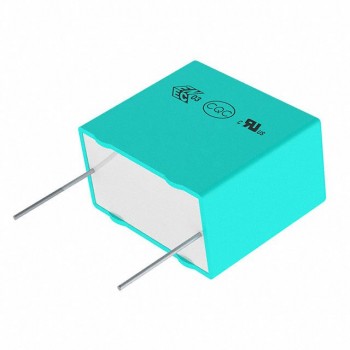In switching power supply design, filter capacitor is an important component for smoothing the output voltage and reducing power supply noise. Selecting the appropriate filter capacitor size is critical to ensuring the stability and performance of the power system. TOPCHIP ELECTRONICS, a spot supplier of electronic components, will introduce how to select the size of the filter capacitor in the switching power supply to ensure that the system works properly and provides reliable power output.

The role of filter capacitors
In switching power supplies, filter capacitors have two main functions:
1. Smooth output voltage: The switching power supply outputs a pulse signal, which can be converted into a smooth DC signal through a filter capacitor to provide a stable power output.
2. Suppress high-frequency noise: The switching power supply will generate high-frequency noise during the switching process. The filter capacitor can suppress these noises and ensure that the ripple of the output signal is as small as possible.
How to choose the size of filter capacitor in switching power supply?
Steps to Select Filter Capacitor
The following are the general steps for selecting the size of the filter capacitor in a switching power supply:
1. Determine output ripple requirements
First, the output ripple requirements required for the specific application need to be determined. This depends on the load being driven and the system's output stability requirements. Generally speaking, for sensitive electronic devices or embedded systems, lower output ripple is required.
2. Calculate the minimum capacitance value
Based on the desired output ripple requirements, the minimum filter capacitor value can be calculated using the following formula:
C = (I * ΔV) / (f * ΔVp)
where C is the filter capacitor value (in Farads), I is the load current (in Amps), ΔV is the allowable output ripple amplitude (in Volts), f is the switching frequency (in Hertz), and ΔVp is the input Ripple amplitude in volts.
3. Consider longevity and efficiency
In addition to meeting the output ripple requirements, the life and efficiency of the filter capacitor also need to be considered. Larger filter capacitors provide better ripple suppression but also increase cost and size. Therefore, it is necessary to consider economics and practical application needs while meeting the requirements.
4. Consider ESR and ESL
When selecting a filter capacitor, you also need to consider its equivalent series resistance (ESR) and equivalent series inductance (ESL). ESR affects filtering effect and power loss, while ESL affects high-frequency response. Therefore, when selecting filter capacitors, you need to pay attention to these parameters and ensure that they are within the specified range.
Summarize
Selecting an appropriately sized filter capacitor is critical to switching power supply design. By understanding the output ripple requirements, calculating the minimum capacitance value, considering life and efficiency, and paying attention to factors such as ESR and ESL, the appropriate filter capacitor size can be selected to ensure the stability and performance of the switching power supply system. In actual applications, verification and adjustment should also be carried out according to specific conditions to obtain the best filtering effect. If you need product data manuals, selection guidance, sample testing, domestic substitution, inquiry, BOM ordering, etc., please contact us via the following email:

